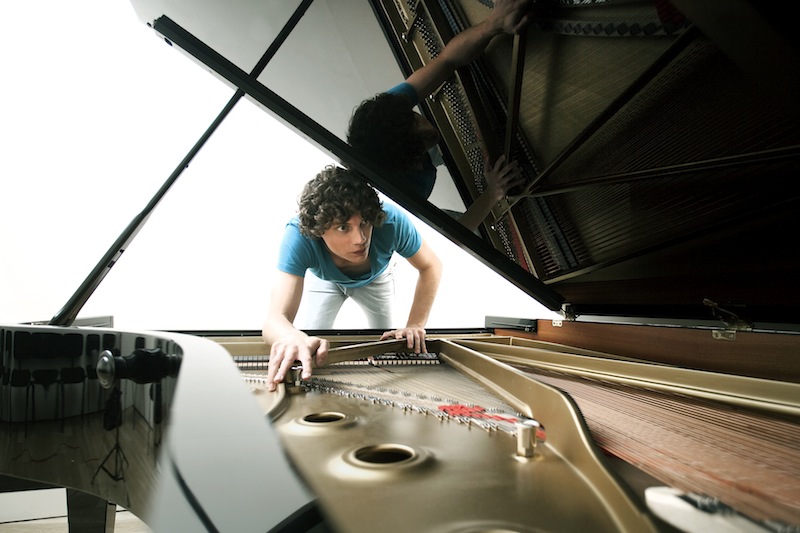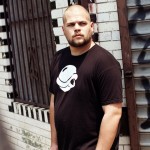As closely aligned as classical and electronic music can be these days, we can’t think of too many artists who’ve been asked to play François K’s Deep Space party and a proper seated gig featuring crossover composers like John Cage and Philip Glass. And yet, that’s where Franceso Tristano‘s at this week, as the Baroque-schooled composer/pianist celebrates the release of his Idiosynkrasia record with two very different New York gigs. Different but fitting. After all, Tristano’s recent Carl Craig collaboration was prefaced by studio time with Murcof (Not Classical) and the godfather of dub-techno itself, Moritz Von Oswald (Auricle Bio On).
“People with formal classical training tend to have very restricted ideas about what music is,” explains Craig, “and can be very limited by that. I know people in the [Detroit Symphony Orchestra] and their concept of perfection is basically to learn a written piece of work exactly. Francesco is a new kid with a completely modern approach.”
For a better idea of what Craig is saying about Tristano’s line-towing compositions, check out a full stream of Idiosynkrasia and a track-by-track commentary after the jump…
“Mambo”
Sometimes you are inspired by a simple series of chord changes; sometimes you are haunted by them and you keep them on standby for as long as it takes. As for the opening harmonies of “Mambo,” I knew they would be the opening of a new project–the project I would title Idiosynkrasia. It turns out they would also provide the basic harmonic material for many tracks of the album, sort of like a leitmotif. The theme is played by the piano once, then starts the 7-note perpetuum mobile in the bass that defines the progression of the piece. This bass line takes off where the piano composition “Mambo” (1986) by Luca Francesconi left off, which in turn embodies the idea that musical material travels through time without stylistic boundaries:
“Nach Wasser Noch Erde”
A composition that imagines a time where our planet will be dry, and all water will be gone. The piece is in F minor, a very ‘earthy’ key, in my opinion. At the end of the track, we hear, one more time, the 4-note leitmotif.
“Wilson”
One of the tracks that took on different shapes throughout the production process. Its final feel was determined by sampling Collin Dupuis’ drum set and processing it. I kept adding more layers to the piano–some analogue synths like the Juno 106 and Prophet V.
“Idiosynkrasia”
The track that best defines what I tried to do with this album–perhaps the most complete synergy between acoustic and electronics. This track took a while to produce. The bass line alone is a blend of piano, two synths, and a string of effect boxes like phaser, delay, and modulation.
“Fragrance De Fraga”“Lastdays”
This started off as a piano improvisation with a ring modulator. By processing the piano, the piece took on a different dimension. This is the last piece I recorded on the first recording session. There’s something about last days:
“Eastern Market”
Another track that morphed quite a lot before becoming what it is. It started off as a kind of Chicago house track. Then I dropped the kick drum, recorded a few Juno 106 lines, and the track turned out funkier. I suppose there are some reminiscences of the ’80s or ’90s here. It definitely cries out “Detroit!”
“Single and Doppio”
What Collin Dupes (Carl’s assistant) and I ordered each time we went to Cafe 1923 while making the album–I had a single, Collin a double (espresso). The title also refers to the two lines intertwined; one by the piano, the other by the ARP synth.
“Hello (Inner Space Dub)”
The collaboration with Carl Craig on the album. It is a rework from my 2007 opening track on Not For Piano. The initial take was 45 minutes long; we cut it down to about 11…Carl’s final layer was done sending the piano sound through his modules, or, like I care to say, through space…



